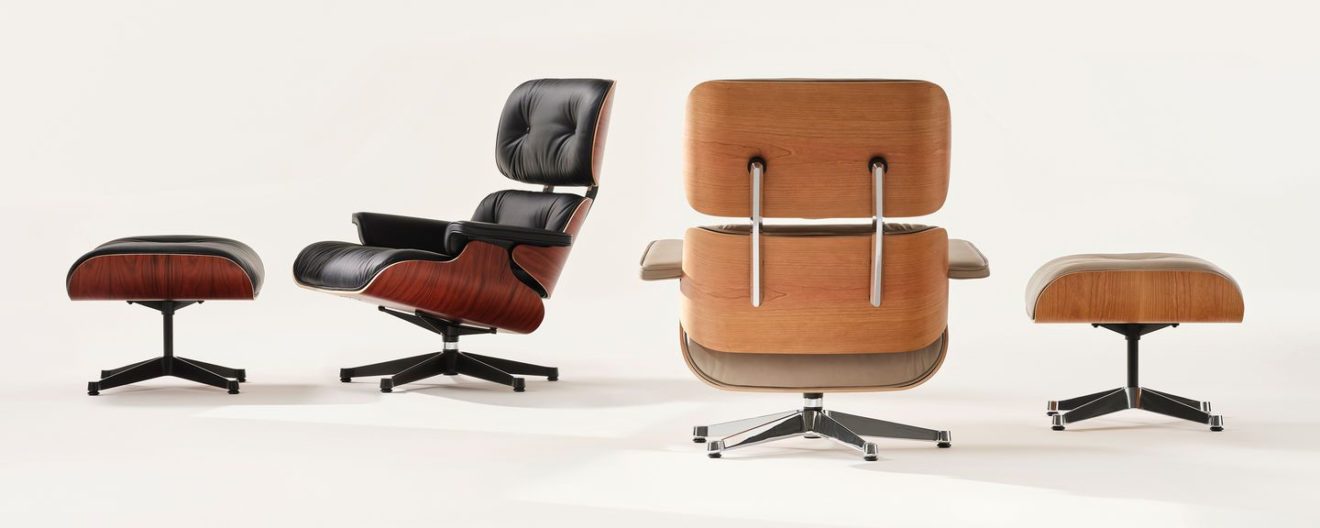Eames Lounge Chair
Charles and Ray Eames need very little introduction. Two of the most influential designers of the 20th Century, this dynamic duo made groundbreaking contributions to the world of furniture design, industrial design, architecture and manufacturing.
Using their self-built (and self-titled) ‘Kazam! machine’ in their California apartment, Charles and Ray created an innovative process which would bend moulded plywood into a compound curved shell. The process worked by layering veneers with their grains perpendicular to each other and then binding them together with glue under pressure. The resulting moulded plywood was then hand-sawn and sanded to a smooth finish.
Incidentally, the technology was put to an alternative use during World War II, with the invention of the first moulded plywood splint as an alternative to the standard metal splints, which were inducing further injury through unavoidable vibration.
The officially titled Eames Lounge (670) and Ottoman (671) combine moulded plywood with upholstered leather with a plush feathers and down filling, to create a chair of supreme comfort. The aim was for it to convey the “warm, receptive look of a well-used first baseman’s mitt,” Charles explained.
Released by Herman Miller in 1956, after some years of development, the Eameses’ modern take on a 19th-century club chair was their first foray into the high-end furniture market. Working for Herman Miller, the Eameses had creative freedom; they were never asked to design for fashion or market trends. As a result, the creative space they were given resulted in Ray and Charles setting the fashions and making the trends.
“The role of the designer is that of a very good, thoughtful host anticipating the needs of his guests.” – Charles Eames
The Eames Lounge Chair and Ottoman are as popular today as they ever were. And, despite their mass production, their appeal continues to lie in the handcrafted details that distinguish their design.
In 2006, the Eames Lounge Chair celebrated its 50th anniversary, with Herman Miller releasing a new model that uses sustainable Palisander rosewood veneer. And, cementing the chair’s iconic status and its enduring contribution to design, they are part of the permanent collections of both New York’s MoMA and the Art Institute of Chicago.








